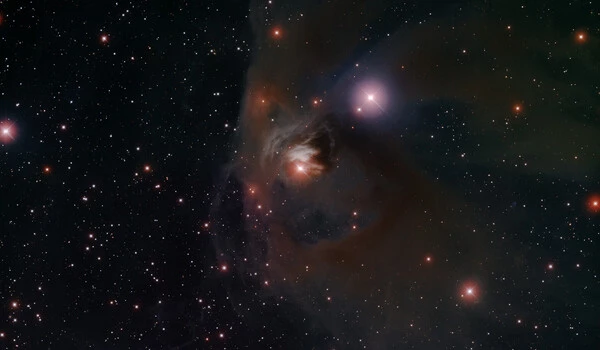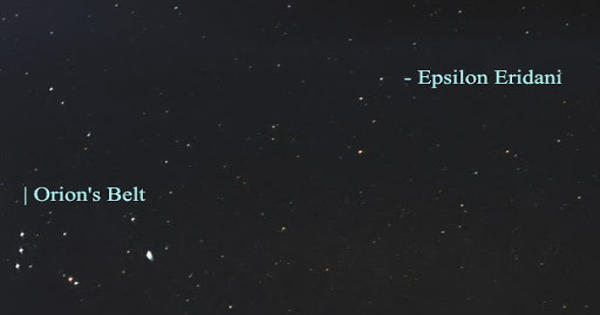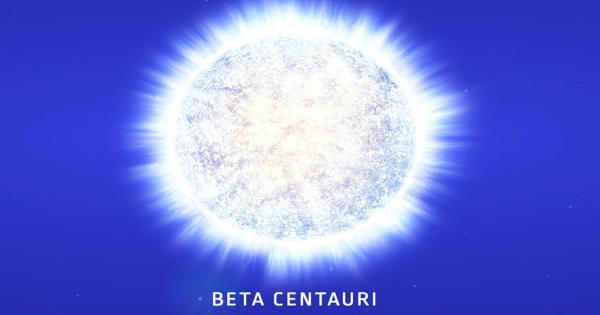T Tauri is the prototype of the T Tauri stars and a variable star in the constellation Taurus. It is any of a class of very young stars with masses comparable to the Sun. The T Tauri stars, named after a prototype discovered in a bright region of gas and dust known as the Hind’s variable nebula, are distinguished by erratic changes in brightness. It was discovered by John Russell Hind in October 1852. T Tauri appears to Earth as part of the Hyades cluster, not far from ε Tauri, but it is actually 420 light-years away and did not form with the rest of them.
The cloud to the west of the system is NGC 1555, known more commonly as Hind’s Variable Nebula. Although this system is considered to be the prototype of T Tauri stars, a later phase in a protostar’s formation, it is a very atypical T Tauri star.
Variability and optical extinction
The southern binary is visible primarily in infrared, which is most likely due to a circumbinary ring blocking optical light (if any optical light is leaking through, it must be less than 19.6), whereas T Tau N’s accretion disk is thought to be nearly perpendicular to our line of sight, allowing us to see T Tau N in optical.
In the infrared, the brightness of the southern binary varies dramatically over seemingly short timescales. It is believed this variability is due to both the matter in the circumbinary ring not being uniform, thus varying the light let through as it orbits the binary, and due to the individual components of the binary flaring up as they accrete matter. It is unknown which mechanism contributes the most to the variability.

Outflow system
All three stars are thought to be in the T Tauri phase. During this phase, a star does not undergo nuclear fusion within its core; instead, it shines due to the residual heat produced by its collapse. As a result, the brightness of a T Tauri star varies over the course of weeks or months as it accretes matter. The jets formed by accretion, which function similarly to the jets of a quasar or active galactic nucleus, are an important mechanic in star formation (AGN). These jets form as a result of the magnetic fields formed in the accretion disk, and as a result, they carry away excess angular momentum from the star. Without this mechanism, a star would not be able to accrete to more than 0.05 M☉.
Surrounding nebulosity
Surrounding the system are three distinct Herbig-Haro objects. These are patches of nebulosity caused by the outflows interacting with the interstellar medium. They can be thought of as shock fronts for the jets as the fast moving material slams into the cold gas and dust surrounding the system.
The most visible nebulosity is the NGC 1555 cloud, also known as Hind’s Variable Nebula, which is only an arcminute west of T Tauri. This was the nebulosity discovered by Hind in 1852, which is now known to be a reflection nebula due to its spectra being very similar to that of T Tauri itself. It is thought that the nebula’s brightness varies due to material occasionally interposing between T Tauri and the reflection nebula.
HH155 appears to be part of the NGC 1555 cloud, but it is actually a patch of emission nebulosity emanating from the blue-shifted east-west outflow from T Tau N. It stretches all the way to NGC 1555, and causes the reflection nebulosity to have some faint, in-situ forbidden line emission, which is produced by the fast-moving outflow interacting with the material at rest within NGC 1555.
















